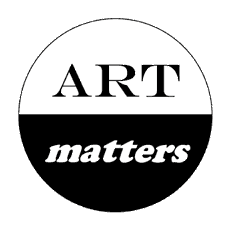Art Matters: Alaska ArtFacts
ART Matters — an on-going advocacy campaign to raise awareness of the importance of arts and culture in our community. Specific Art Matters activities have included the co-sponsorship of a Mayoral Candidate Forum and a collaborative print and media campaign to build awareness of the arts.
Facts About Arts and Culture in Alaska
"GE hires a lot of engineers. We want young people who can do more than add up a string of numbers and write a coherent sentence. They must be able to solve problems, communicate ideas and be sensitive to the world around them. Participation in the arts is one of the best ways to develop these ideas." — Clifford V. Smith, Jr.
President, GE Fund
Art and Economics
In FY 05, the $460,000 in state funds which supported arts organizations in Alaska generated more than 16 million dollars in revenue. Just about half of that amount was earned from admissions, tuition and sales of services. Occurrences in arts activities in Alaska were approximately one million people.
4,500 Alaskans-about 2% of the entire workforce-earn income from arts-related activity-more than Alaska's mining industry, the residential construction industry and the banking sector. This direct arts employment includes arts-related organization, art retailers and an estimated 3,000 producers of Alaska art and fine crafts. (McDowell Group)
Arts-related spending by individuals employed in the arts results in an indirect economic impact of the arts industry at approximately 600 jobs and $16 million in payroll. (McDowell Group)
Nearly 7 in 10 urban Alaskans buy tickets to performances. More than 8 in 10 Alaskans believe the arts improve the quality of life in Alaska. Nine in ten people agree that the arts are very important to children's education.
Arts and Education
In the Anchorage School District, most elementary students receive only two hours of visual art per month. Music fares a little better. Elementary students, K-5, receive four hours per month of music instruction. At the 5th and 6th grade levels, students can take band or orchestra, and about 85% of the students opt for that program.
In arts education it has been repeatedly shown that exposure to the arts can raise SAT scores and improve basic skills. There is a link between the creativity of arts participation and future creativity on the job.
The College Entrance Examination Board reports that students who study the arts more than four years score 59 points higher on the verbal SAT exam and 44 points higher on the math portion.
A recent study by the Anchorage School District revealed that 93 different languages are spoken in the homes of Anchorage students.
Recently the National Governors' Association sponsored a study on the impact of arts education on workforce development. The study concluded that arts education increases competency in the following areas: perception of relationships, attention to detail, critical analysis, decision-making skills and visualizing goals and outcomes. Each one of the components is particularly useful in today's complex world.
Statistics provided by the Alaska State Council on the Arts.


![[Photo]](images/banner_activities.jpg)